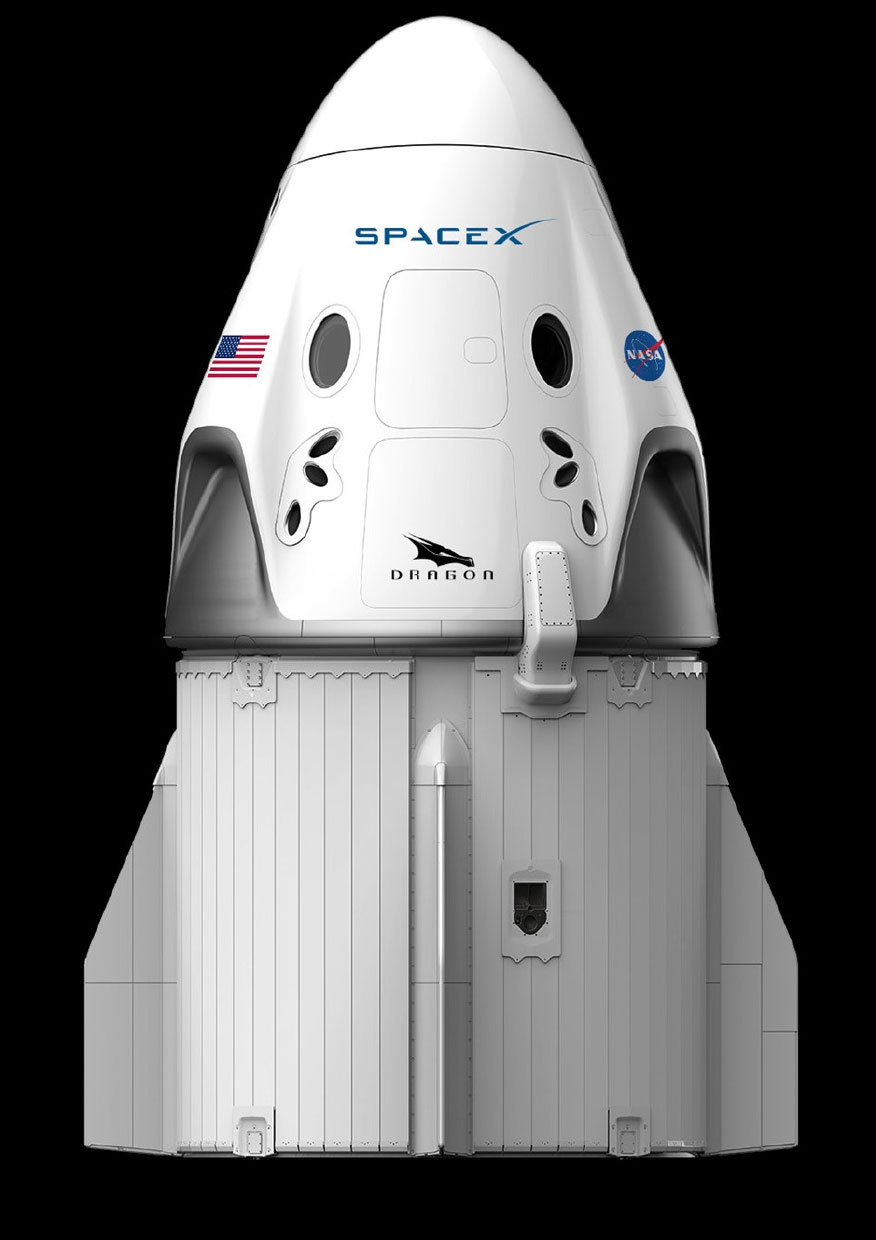


SpaceX`s Crew Dragon is an autonomous spacecraft designed to deliver crew and critical cargo to orbiting destinations. Crew Dragon launches atop a Falcon 9 rocket from Launch Complex 39A at NASA`s Kennedy Space Center in Florida. As part of NASA`s Commercial Resupply Services contract with SpaceX, the company developed its Dragon spacecraft to carry cargo to space, but it was designed with people in mind from the beginning.
Crew Dragon Design and Development
Crew Dragon was developed in collaboration with NASA’s Commercial Crew Program. In 2014, NASA awarded Commercial Crew Transportation Capability (CCtCap) contracts to Boeing and SpaceX to each safely and cost-effectively transport astronauts to the International Space Station from the United States. Crew Dragon can carry up to seven passengers but will carry up to four astronauts for NASA missions, and is designed for water landings. Crew Dragon’s displays will provide real-time information on the state of the spacecraft’s capabilities—anything from the spacecraft`s position in space, to possible destinations, to the environment on board. Crew Dragon is a fully autonomous spacecraft that can be monitored and controlled by onboard astronauts and SpaceX mission control in Hawthorne, California.
Dragon comprises two main elements: the capsule, which is designed to carry crew and critical, pressurized cargo, and the trunk, which is an unpressurized service module. The capsule is subdivided into the pressurized section, the service section, and the nose cone, which is opened once on orbit and stowed prior to re-entry. Near the base of the capsule, but outside the pressurized structure, are the Draco thrusters, which allow for orbital maneuvering. Additional Draco thrusters are housed under the nose cone, along with Dragon’s Guidance Navigation and Control (GNC) sensors. Dragon’s trunk provides the mating interface for the capsule to Falcon 9 on its ascent to space. On orbit, half of the trunk contains a solar array, which powers Dragon, and the other half includes a radiator, which rejects heat. Both the radiator and solar array are mounted to the exterior of the trunk, which remains attached to Dragon until shortly before re-entry when the trunk is jettisoned. Crew Dragon was designed with three windows so passengers can take in views of Earth, the Moon, and the wider solar system right from their seats. Crew Dragon has an Environmental Control and Life Support System (ECLSS) that provides a comfortable and safe environment for crew members. During their trip, astronauts on board can set the spacecraft’s interior temperature to between 65 and 80-degrees Fahrenheit (18-27°C). Crew Dragon features an advanced abort system with eight SuperDraco engines and a series of parachutes that can be activated instantaneously from the moment they are armed on the launch pad all the way through orbital insertion.